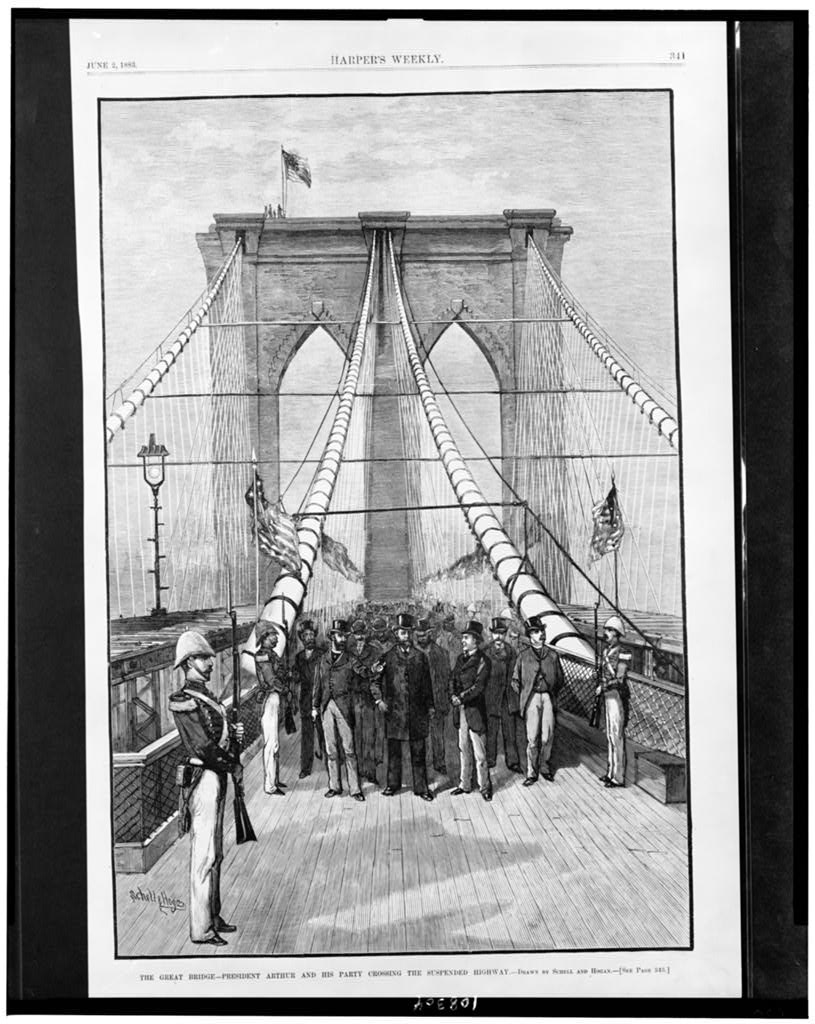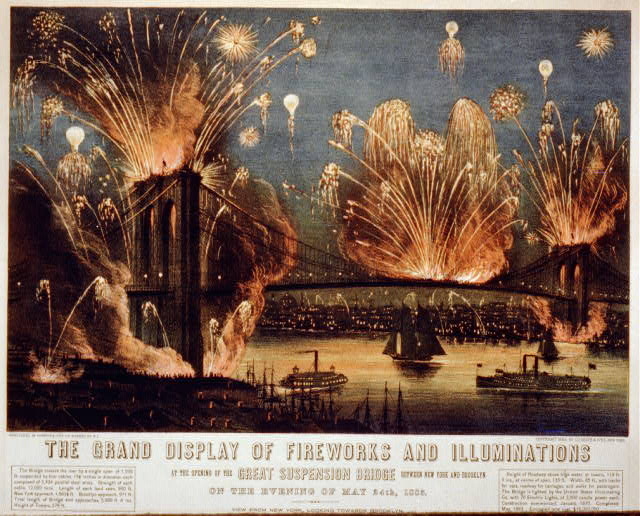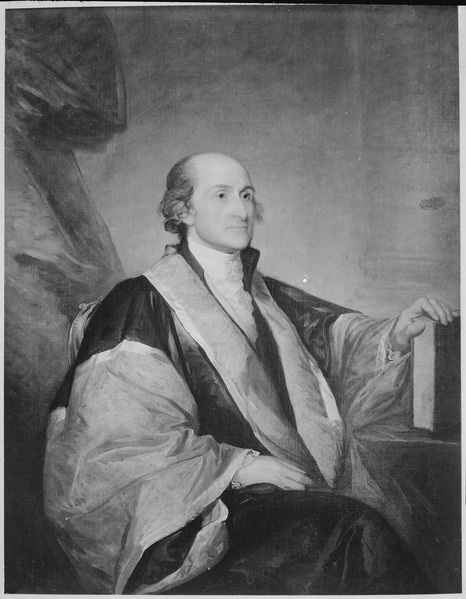The bridge was started on January 3, 1870. Designed by John Augustus Roebling, and construction was overseen by his son Washington Roebling.
The opening of the bridge was attended by thousands of people, including President Chester A. Arthur, New York Mayor Franklin Edson, and Brooklyn Mayor Seth Low (this was before NYC was consolidated). The two mayors crossed the bridge from their respective sides, with the President accompanying Mayor Edson. They met at the Brooklyn-side tower. The crossing was accompanied with celebratory cannon fire, fireworks, and the performance of a band. Washington Roebling did not attend the opening, and was rarely at the site. He did, however, hold a celebratory banquet at his home. President Arthur also shook hands with Roebling at Roebling's home, since he did not attend the official opening.
The Public were fascinated by this new, and at the time of it's construction, the longest suspension bridge in the world. They did not trust the new technology completely. Six days after the opening, on May 30, 1883, a rumor spread that the bridge was going to collapse, and a stampede resulted, with 12 people dying as a result.
P.T. Barnum, ever the showman, took the opportunity, almost a year later, on May 17, 1884, to prove to the public, once and for all, that the bridge was sturdy and stable. Barnum had one of his biggest attractions (both in size and fame), Jumbo, lead a parade of 21 elephants over the bridge.
Since then, the bridge has become a landmark, and was what allowed for the merging of two of the largest cities at the time, New York and Brooklyn, along with the other boroughs, into what is now known as New York City.








 RSS Feed
RSS Feed